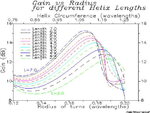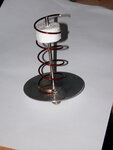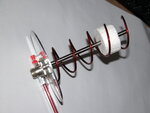tony_lth
Advanced Member level 5
I need to design an antenna, but I am a newbie in antenna.
Could anyone give me some suggestion?
Requirements:
1. Freq band: 14GHz
2. Size: About Beer Can
3. Beam-width: not care,
Which type antenna should I use to get the maximum gain, except Lens?
many thanks.
Could anyone give me some suggestion?
Requirements:
1. Freq band: 14GHz
2. Size: About Beer Can
3. Beam-width: not care,
Which type antenna should I use to get the maximum gain, except Lens?
many thanks.


